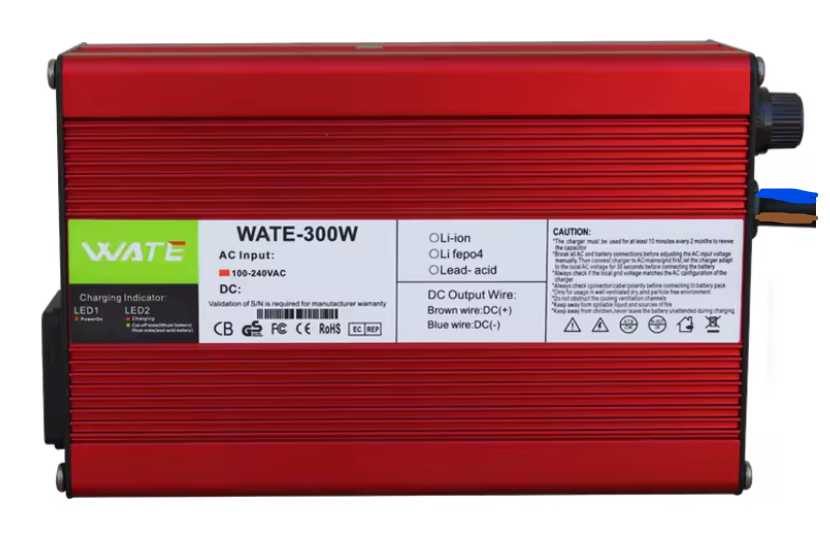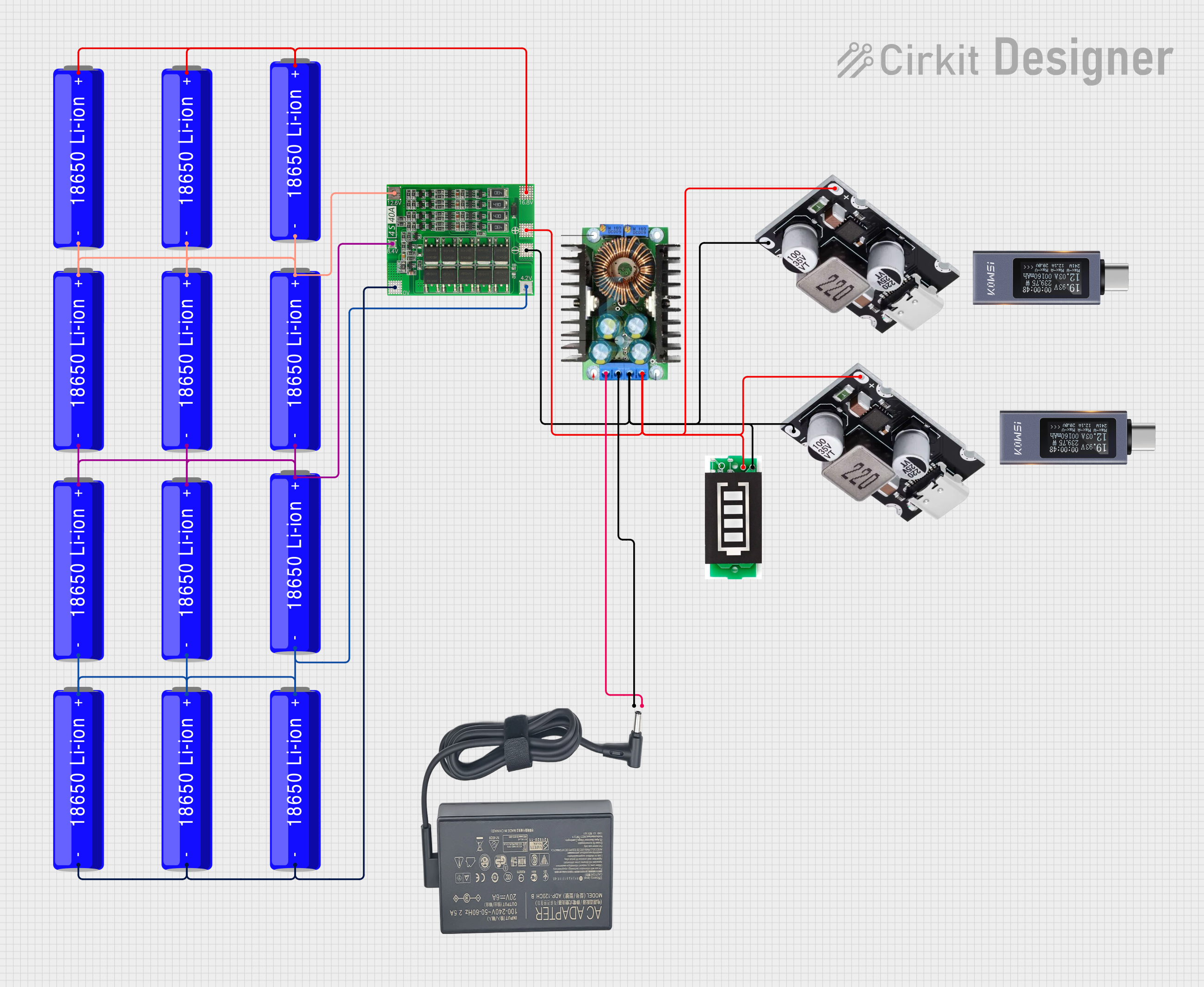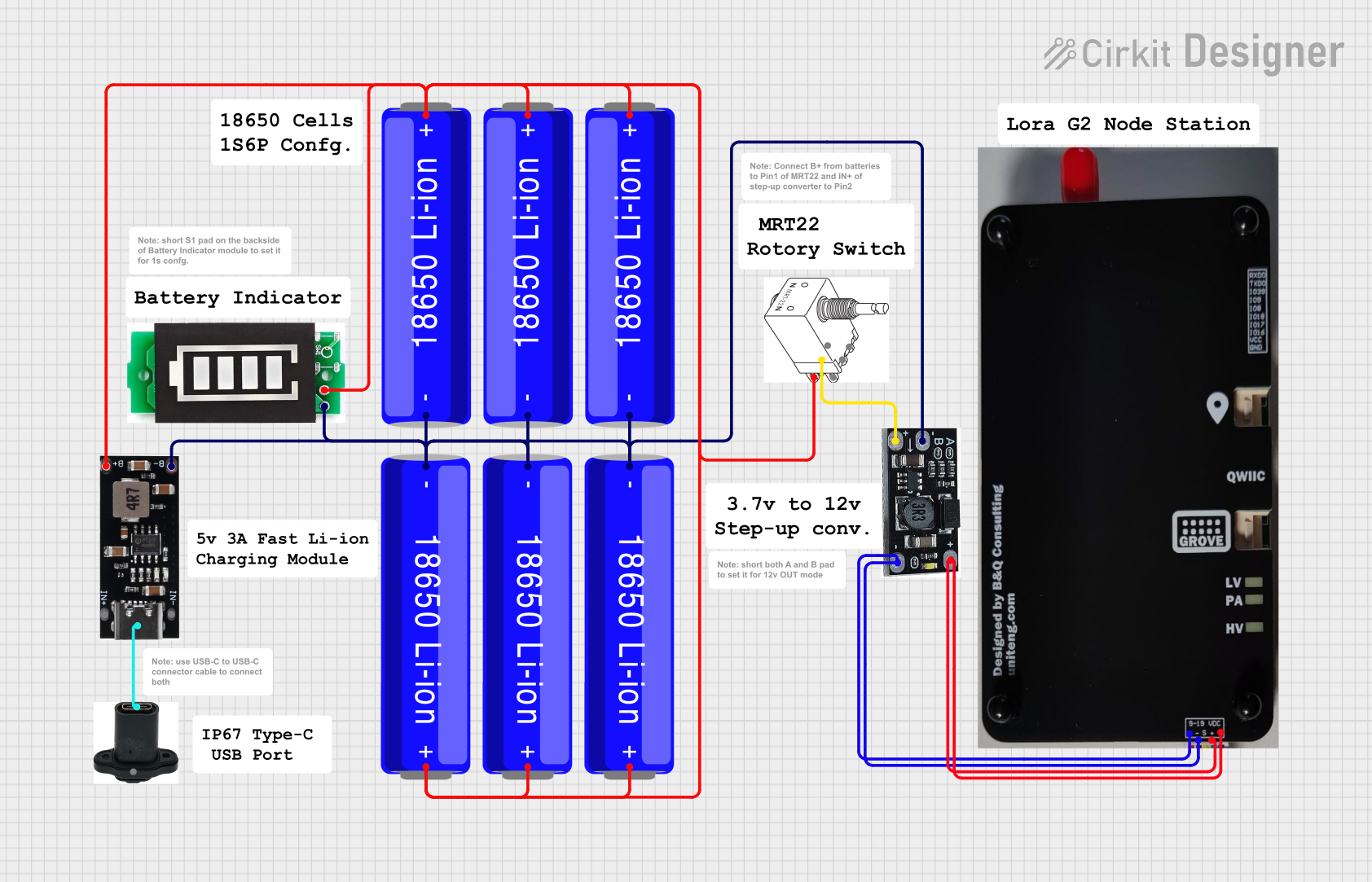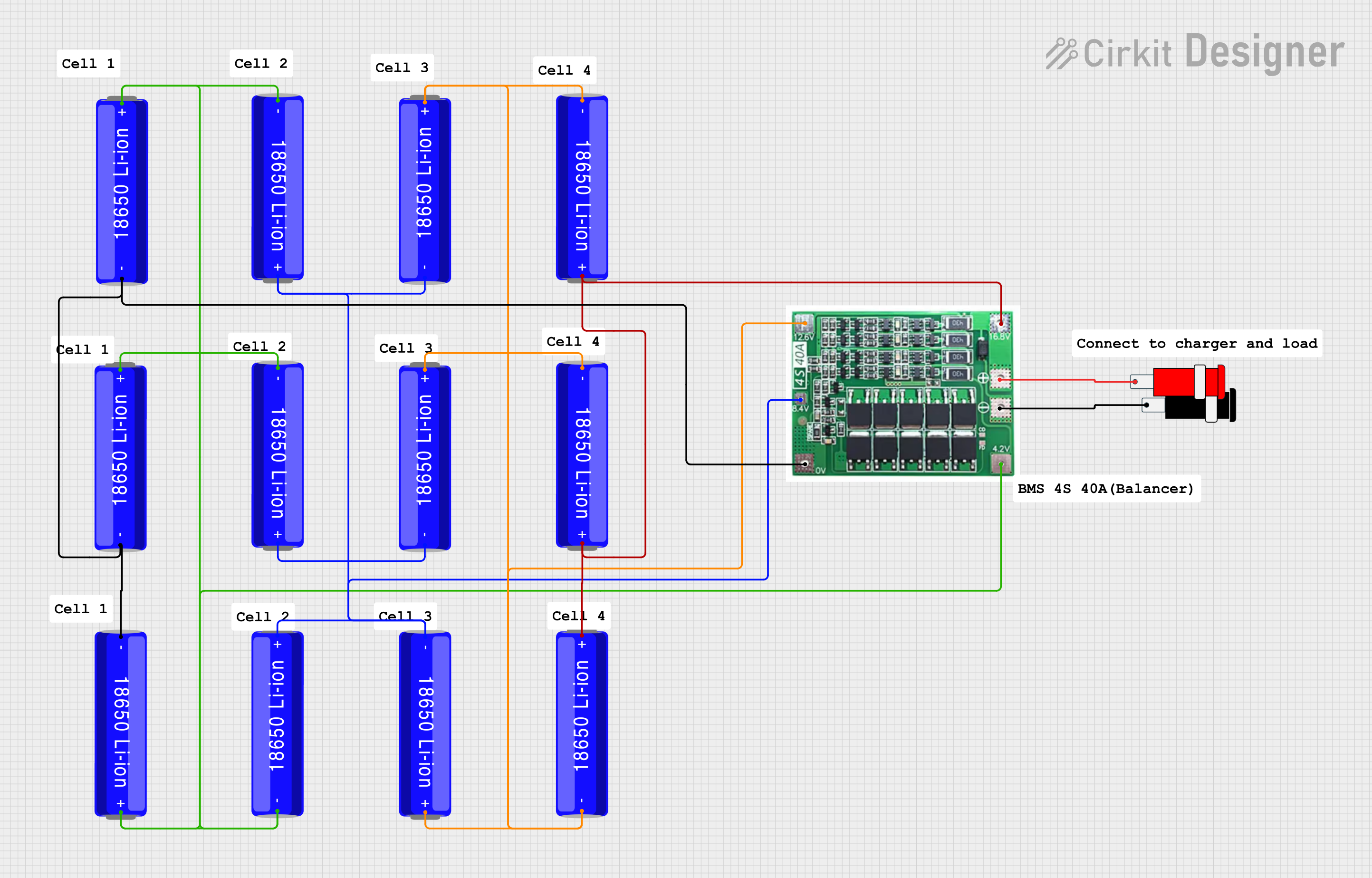
How to Use Chargeur intelligent de batterie Li-ion 54.6V 5a, 48V: Examples, Pinouts, and Specs

 Design with Chargeur intelligent de batterie Li-ion 54.6V 5a, 48V in Cirkit Designer
Design with Chargeur intelligent de batterie Li-ion 54.6V 5a, 48V in Cirkit DesignerIntroduction
The Chargeur intelligent de batterie Li-ion 54.6V 5A, 48V (Manufacturer: WATE-300W, Part ID: Battery 48V 13s) is a high-performance battery charger designed for 48V lithium-ion battery packs. It is specifically tailored for 13-series (13s) Li-ion battery configurations, providing a maximum output voltage of 54.6V and a charging current of 5A. This charger incorporates intelligent charging algorithms to ensure safe, efficient, and reliable charging while extending battery life.
Explore Projects Built with Chargeur intelligent de batterie Li-ion 54.6V 5a, 48V

 Open Project in Cirkit Designer
Open Project in Cirkit Designer
 Open Project in Cirkit Designer
Open Project in Cirkit Designer
 Open Project in Cirkit Designer
Open Project in Cirkit Designer
 Open Project in Cirkit Designer
Open Project in Cirkit DesignerExplore Projects Built with Chargeur intelligent de batterie Li-ion 54.6V 5a, 48V

 Open Project in Cirkit Designer
Open Project in Cirkit Designer
 Open Project in Cirkit Designer
Open Project in Cirkit Designer
 Open Project in Cirkit Designer
Open Project in Cirkit Designer
 Open Project in Cirkit Designer
Open Project in Cirkit DesignerCommon Applications and Use Cases
- Electric bicycles (e-bikes) and scooters
- Energy storage systems (ESS)
- Solar power systems with Li-ion battery banks
- Uninterruptible power supplies (UPS)
- Robotics and industrial equipment
Technical Specifications
Key Technical Details
| Parameter | Specification |
|---|---|
| Input Voltage Range | 100-240V AC, 50/60Hz |
| Output Voltage | 54.6V DC (for 48V Li-ion batteries) |
| Output Current | 5A |
| Battery Configuration | 13-series (13s) Li-ion cells |
| Charging Algorithm | CC-CV (Constant Current - Constant Voltage) |
| Efficiency | ≥ 90% |
| Operating Temperature | -10°C to 40°C |
| Storage Temperature | -20°C to 60°C |
| Dimensions | 180mm x 90mm x 60mm |
| Weight | ~1.2 kg |
| Safety Features | Overvoltage, overcurrent, short-circuit, and over-temperature protection |
Pin Configuration and Descriptions
The charger has a simple interface with the following connectors:
| Pin/Connector | Description |
|---|---|
| AC Input | Standard AC power input (100-240V) |
| DC Output | Positive (+) and Negative (-) terminals for battery connection |
| LED Indicator | Multi-color LED for charging status |
LED Indicator Status
| LED Color | Status Description |
|---|---|
| Red | Charging in progress |
| Green | Charging complete |
| Flashing Red | Fault detected (e.g., overvoltage, short-circuit) |
Usage Instructions
How to Use the Component in a Circuit
Connect the Charger to the Battery:
- Ensure the battery pack is a 13-series (13s) Li-ion configuration with a nominal voltage of 48V.
- Connect the charger's DC output terminals to the battery pack, ensuring correct polarity (Positive to Positive, Negative to Negative).
Power On the Charger:
- Plug the AC input cable into a standard wall outlet (100-240V AC).
- The LED indicator will light up red, indicating that charging has started.
Monitor the Charging Process:
- The charger will operate in CC (Constant Current) mode initially, delivering 5A to the battery.
- As the battery approaches full charge, the charger will switch to CV (Constant Voltage) mode, reducing the current gradually.
- When the LED turns green, the battery is fully charged.
Disconnect the Charger:
- Unplug the charger from the wall outlet before disconnecting it from the battery.
Important Considerations and Best Practices
- Battery Compatibility: Only use this charger with 13s Li-ion battery packs. Using it with incompatible batteries may result in damage or safety hazards.
- Ventilation: Ensure adequate ventilation around the charger during operation to prevent overheating.
- Polarity Check: Always verify the polarity of the connections before powering on the charger.
- Storage: Store the charger in a cool, dry place when not in use.
Arduino Integration Example
While this charger is not directly connected to an Arduino, you can monitor the charging process using an Arduino and a voltage sensor. Below is an example code snippet to read the battery voltage:
// Arduino code to monitor battery voltage during charging
const int voltagePin = A0; // Analog pin connected to voltage sensor
const float voltageDividerRatio = 11.0; // Adjust based on your voltage divider
void setup() {
Serial.begin(9600); // Initialize serial communication
pinMode(voltagePin, INPUT); // Set voltage pin as input
}
void loop() {
int sensorValue = analogRead(voltagePin); // Read analog value
float batteryVoltage = (sensorValue * 5.0 / 1023.0) * voltageDividerRatio;
// Print the battery voltage to the Serial Monitor
Serial.print("Battery Voltage: ");
Serial.print(batteryVoltage);
Serial.println(" V");
delay(1000); // Wait for 1 second before the next reading
}
Note: Use a voltage divider circuit to step down the battery voltage to a safe range for the Arduino's analog input (0-5V).
Troubleshooting and FAQs
Common Issues Users Might Face
Charger LED Does Not Turn On:
- Cause: No power supply or faulty AC input connection.
- Solution: Check the wall outlet and ensure the AC input cable is securely connected.
LED Flashes Red:
- Cause: Fault detected (e.g., overvoltage, short-circuit, or overheating).
- Solution: Disconnect the charger and inspect the battery connections. Allow the charger to cool down if overheating is suspected.
Battery Does Not Charge Fully:
- Cause: Battery capacity mismatch or degraded battery cells.
- Solution: Verify the battery's capacity and health. Ensure it is a 13s Li-ion pack.
Charger Overheats:
- Cause: Poor ventilation or high ambient temperature.
- Solution: Operate the charger in a well-ventilated area and avoid using it in extreme temperatures.
Solutions and Tips for Troubleshooting
- Always check the battery pack's specifications to ensure compatibility with the charger.
- Use a multimeter to verify the output voltage and current of the charger if issues persist.
- If the charger fails to operate after troubleshooting, contact the manufacturer or authorized service center for assistance.